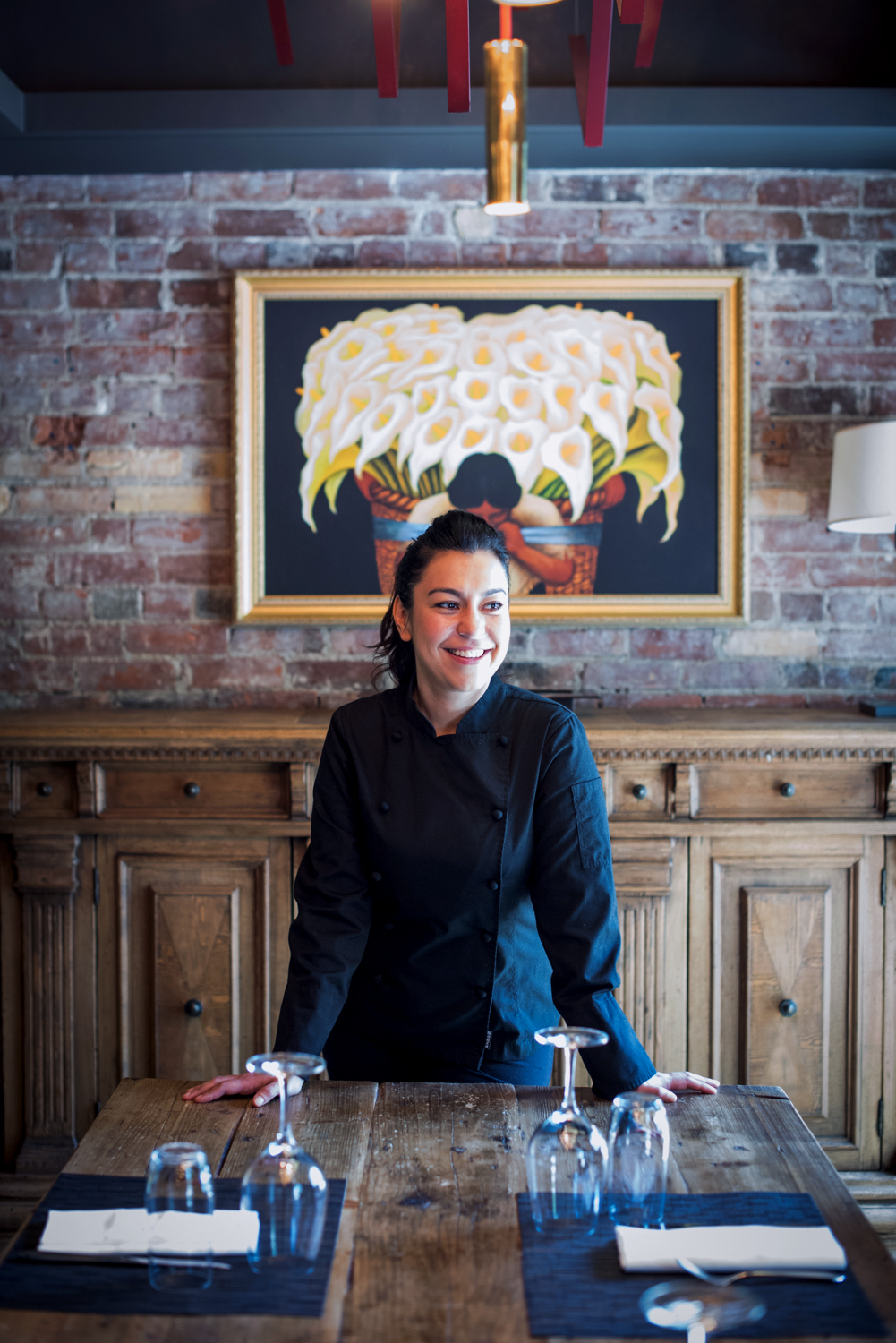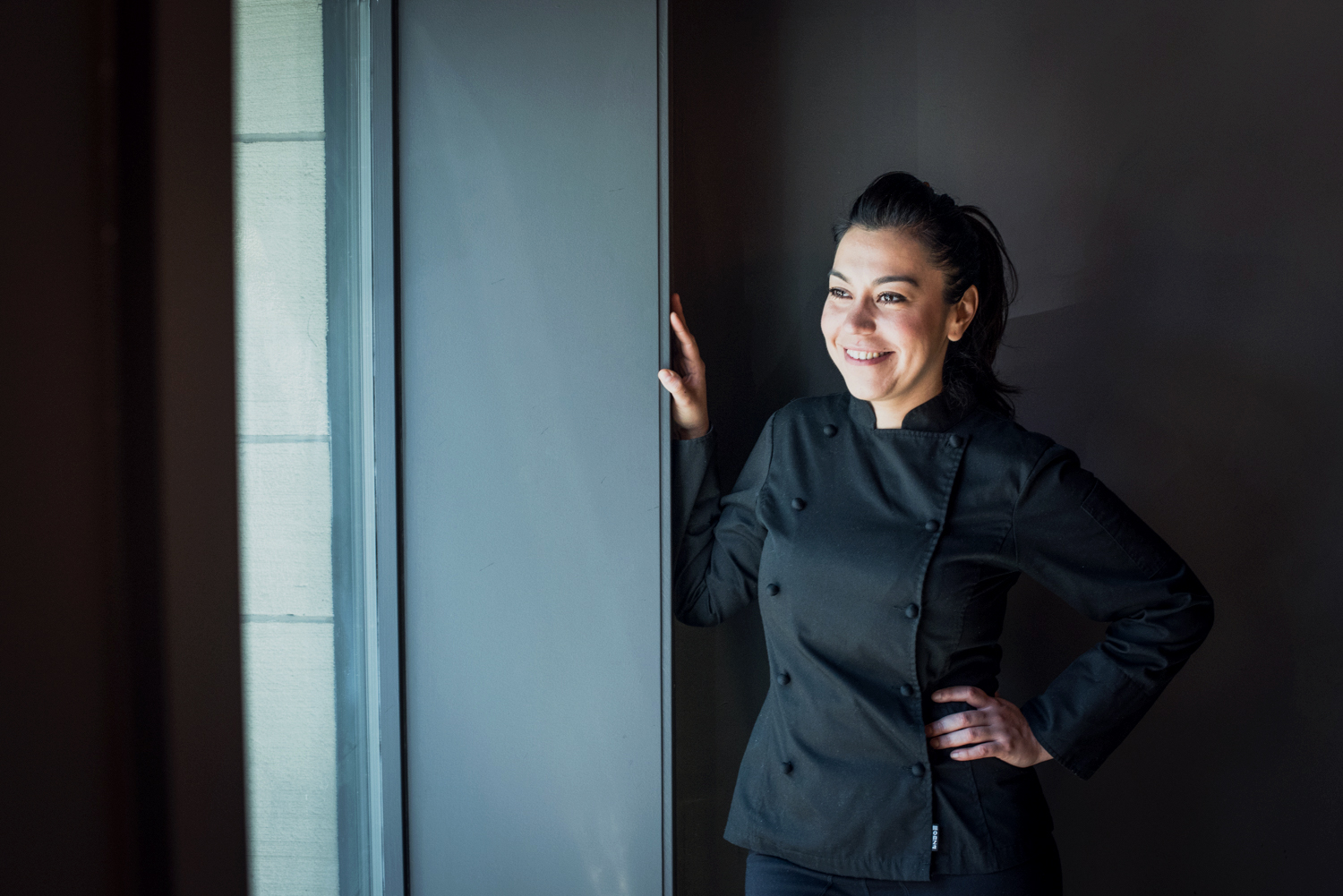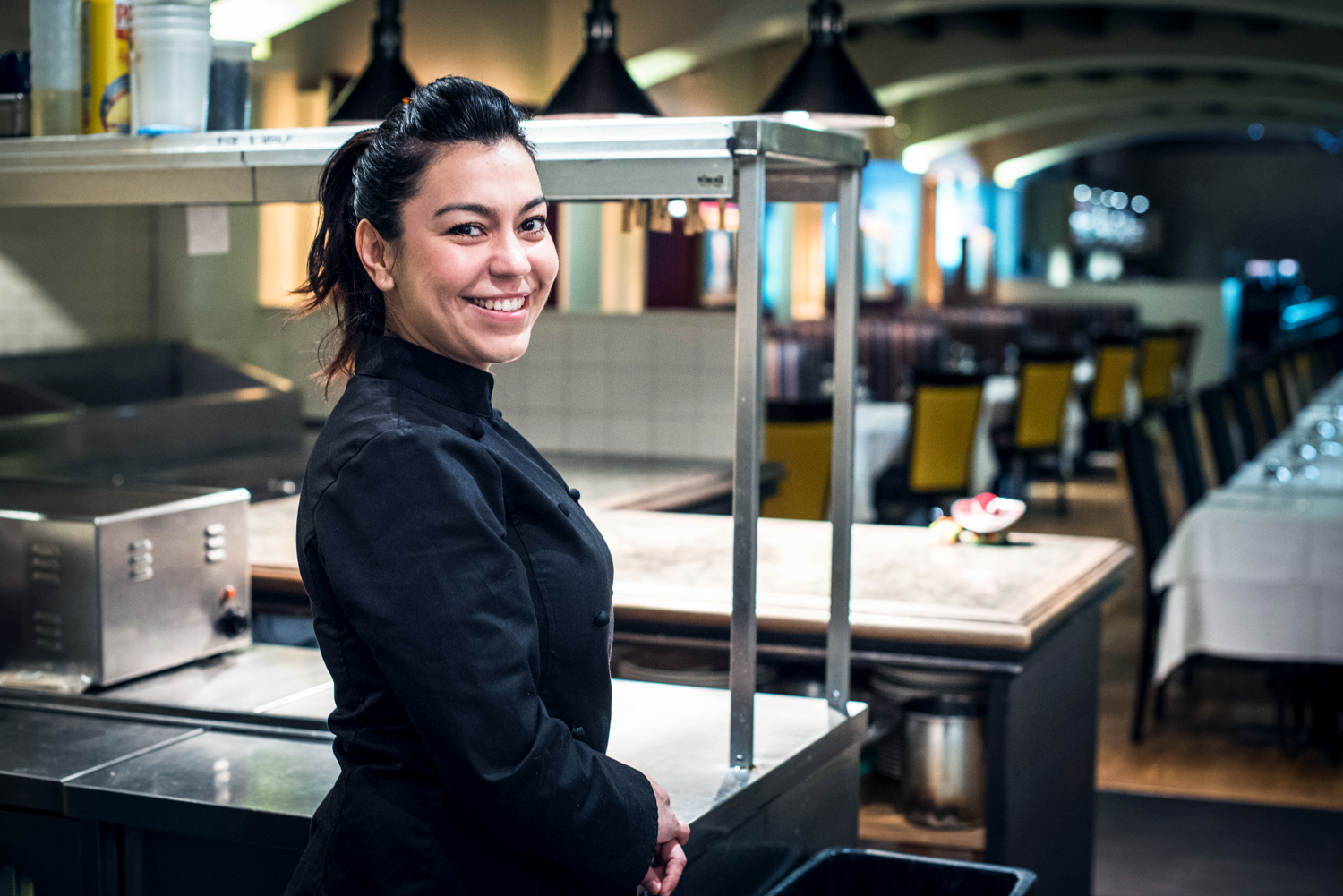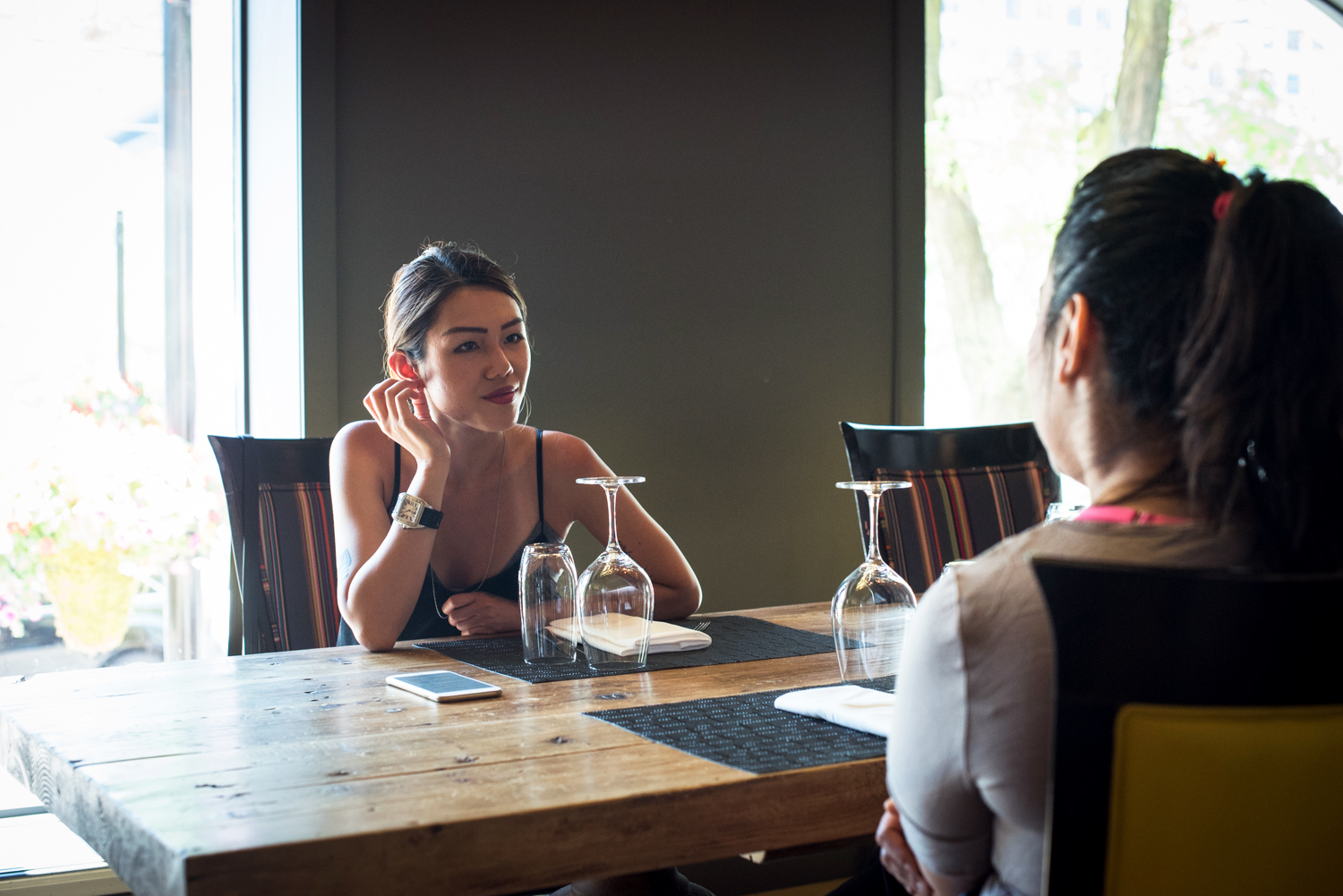#ROGUESTORIES: Elia Herrera, Executive Chef
Last Edited: October 12, 2016
Author:



Photos by KTCHN Photography / Katy Chan
Chef Elia Herrera is a lovely person to talk to about food on a Sunday afternoon, when you can feel fairly shameless and certain that the rest of the city is feeling as indulgent and lazy as you are. As the executive chef of restaurants Los Colibris, El Caballito, and El Patio, she is known for her varied approaches to Mexican cuisine that pay homage to her personal upbringing.
Elia muses over flavours and ingredients with the same sense of love and duty that comes through whenever she talks about her family, whose catering business nurtured her curiosity into talent. How she fostered her culinary interest taught her to be a great host as well as a chef: During our conversation, she recalled a couple she served over the weekend, kids on a first date, marvelling at their surroundings and sheepishly ordering the cheapest dishes. To their delight, she sent over dessert.
To learn more about how she went from the first batch of not-so-great cookies to headlining the Taste of Toronto festival, read on.

Photos by KTCHN Photography / Katy Chan
Can you tell me how food was introduced to your upbringing?
My grandmother started cooking when she was 14 to help out the family. That’s how she started the catering banquet company in Mexico. Then my mom got into it, my uncles… all of the family. I grew up with my grandmother since I was very little; my mother had split with my father. My grandparents raised me, so I was always involved in food. I grew up with it. For me, food was always familiar.
Do you remember the first dish you ever made?
My first dish was cookies. I remember they were butterfly-shaped, and they were horrible. [laughs] I was so little and I did whatever. Obviously, my family was happy to see that I wanted to cook, or at least bake. They slowly encouraged me to start doing it more often. Then I remember making a huge pizza. It was a pretty good-looking pizza, actually—I made it in my family’s business kitchen. But it was raw. [laughs] In the next weekend, my uncle pushed me to make another to get better. I was so excited about it.
And how old were you then?
I was under 10 at the time.
Wow. So you’ve always been into baking?
No one in my family bakes, actually. For me, it was new. One of my aunts loved to bake, and she used to bake five different desserts a day for her husband. He was rather demanding. And she got me into baking. I used to go to her house and bake with her. She taught me everything.

How did you get into other areas of cooking?
When I was in elementary school, I used to work with my family. I made tiramisu for a thousand people. It took me two nights without sleep. It was crazy; they never paid me. [laughs] I did desserts until the Instituto de Culinario, which was three hours from my town. When I was there, I started in international cuisine and pastries. I got to learn the basics of the savoury cuisine. But I was always into baking. What I really love about pastry is the art of it. I love painting on the cakes. I love doing sugar pieces.
Having been taught by your family, what was your experience like at the cooking institute?
Oh, so different. The school was very technical. It was all about words, while my grandparents were all about the senses: how it feels, how it smells, how it tastes. I love that. It’s common sense; it was a way of cooking that was more unique and dependent on myself as a cook.
Your family’s recipes has had a huge influence on your empire. Because they’re so personal and attuned to your sensibilities, how do you teach others to make your dishes?
I teach it exactly the way my mother and grandmother taught me, by smelling and touching. It’s easy to remember, easy to connect your senses to the product.
Can you describe to me what that connection feels like?
For example, you have to remember the texture of an ingredient, and picture it in your head on the plate. That’s the connection between your psychological palette and imagination.
When I develop my menus, first I think about the flavours I want to use, then techniques. If I want to work with hibiscus, I know I’ll have to use something water-based instead of dairy—otherwise I kill the flavour. Then I draw the plate using the flavours and textures from my psychological palette.
“You have to remember the texture of an ingredient, and picture it in your head on the plate. That’s the connection between your psychological palette and imagination.”
How would you describe your palette?
I think my nose is sharper than my palette, though I’ve had a good palette since I was little. I was always into strong flavours, like cheeses. At home, we would always have antipasto to start every meal. We’d have different types of cheeses my grandmother used to bring. There was this one cheese that was my favourite, called shanklish. It was Lebanese, looks like caboc [a Scottish cheese], and you’d put olive oil, and spread it on the pita bread. So delicious. I used to eat the whole bowl by myself.
Those snacks are the best. The longer it lasts, the better it tastes.
And you have so many different flavours to taste. You never get bored, even when you’re eating each bite over and over. That’s how I love to eat—with variety. Like tapas. When we’re in restaurants, we always ask for a few dishes and share. Food brings people together. That’s what it is about.
I’m guessing that communal style of eating is a big part of Mexican culture.
Absolutely. Mexican lunches bring 100% of the family together. Dinner… depends on your activities, sometimes yes or no. That was one of the big [differences] when I moved here. For me, dinner is lunch. In your house, in Mexico, we’d sit down at a huge table. We were a lot of us back then. My mom would help serve everybody, and when we’re all ready, we start eating. [The conversation] can go on for four hours. It’s incredible. I would leave for ballet class and come back, and they’re still there. Good memories. Coffee and Mexican sweets.
When conceiving of your restaurants, what did you borrow from your memories?
I [remind] my front of house staff to encourage diners to order family style. That’s the idea of Los Colibris: the culture, the way of eating, and having a good time. I’ve trained my chefs’ palettes well, they’re like real Mexicans that way. They know how to taste it. I’m lucky to have such an amazing team.
When I hire, I’m not looking for things like the best knife skills. I’m looking for someone who is passionate about my culture.
“That’s the idea of Los Colibris: the culture, the way of eating, and having a good time.”
Can you describe to me your perfect dish?
Harmony and history. A perfect dish is one that continues your palette, so you never get bored. Something sharp, something to balance it out, something to clean your palette, something that would ready you for the next dish. Like a rollercoaster.
My menu at Los Colisbris is like this. You start with sweet, then spicy. Then citric. The spicy richness of a jalapeño sauce with the tart of a passion fruit, the saltiness of queso, coconut with salsa that’s like acid… you’re always discovering something.
You’ve managed to remain very true and authentic to your culture. What are your thoughts on a city like Toronto, where Mexican fusion is king?
I’m very proud. It honestly makes me feel very good, and I don’t think it’s going anywhere. Mexican cuisine is a great culture to taste and learn from, and I’m glad the world is discovering something we’ve had for so many years. We, too, are influenced by fusion, like when we were colonized by the Spanish. Each state and city has a different personality. My town, Veracruz, likes to fry a lot. Oaxaca likes to toast. Ingredients are shared, but on different paths. We also like to mix savoury and sweet, like mole poblano.
Are there other cuisines you look up to?
I love Italian cuisine. I would like to eventually like to do something like that—Italian technique with Mexican flavours, like flavouring pastas with chiles. The way we eat are very similar.
Do you feel there’s a difference between the male and female chef experience?
To be honest, no. When it comes to the culinary, there is no sex to me. I just express myself in what I do. It’s about your capabilities, how much you want it, the talent. I’ve seen the same harmony and sensitivity in the dishes of men as I have from women.
“When it comes to the culinary, there is no sex to me… I’ve seen the same harmony and sensitivity in the dishes of men as I have from women.”
What’s the most important trait to have as a chef?
Being able to go with the flow. Do what comes to you. Let it come naturally. That’s how I’ve always been in my career—following the senses that my grandmother and mother taught me. If it makes sense to you and it tastes good, present it.
New chefs, don’t be afraid. Do your best and be yourself. As soon as you have an opportunity, grab it because it belongs to you.
For more about Elia and Los Colibris: Website, Instagram, Twitter, Facebook